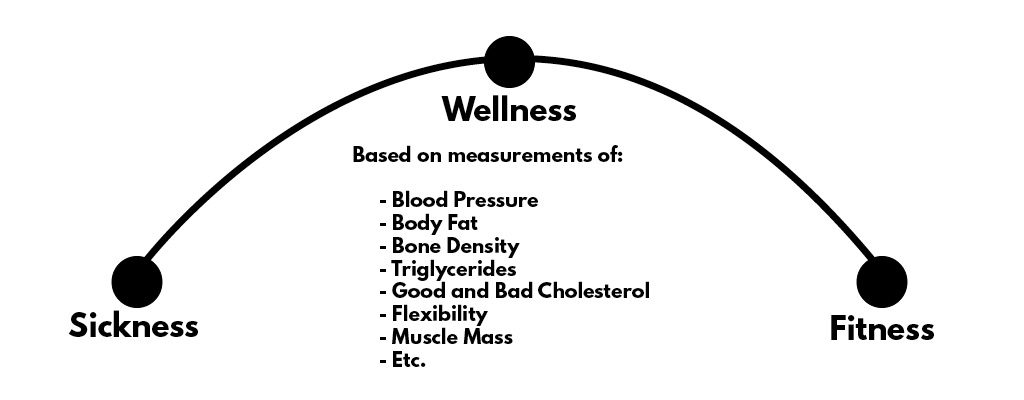If you’re not familiar with the sickness-wellness-fitness continuum, it was created by Greg Glassman and it applies to most fitness methods.

Here’s a link to Glassman’s explanation of the continuum: “What Is Fitness?”
Our role as coaches is to move people along the fitness continuum from left to right.
Clients don’t know the continuum. So their goals come first: If they say they want to lose weight, they probably don’t care about other health metrics—yet. Good coaches know to focus on the client’s goals but to also keep the long-term progression in mind even if they don’t talk about it. Great coaches talk about weight loss to their clients at first and slowly introduce the “big picture” over time. That’s how Glassman did it.
Here’s where we fit on the fitness continuum: Our scope of practice is limited on the left side but wide open on the right.
For example, we can’t cure cancer or COVID-19 with exercise. Those are diseases, and we are not pathologists.
If someone is already pathologically sick, the person needs a health-care professional. Glassman referred to doctors as “lifeguards” and trainers as “swim coaches”:
So let’s talk about musculoskeletal, respiratory and metabolic “illness”:
- We can’t cure a broken bone.
- We can’t knit a torn muscle or heal a contusion.
- We can’t cure Type 1 diabetes.
We can provide comfort and care. We can sometimes even help people with other things in their lives or help them train around acute injuries. But we can’t cure the stuff at the extreme left side of the spectrum. That’s for doctors and time.
Now take a small step to the right: soft-tissue injury, concussion or chronic metabolic problems created by disease.
We can’t heal a sprain. We can’t reverse a chronic overuse injury or repair an acute injury like a labral tear. We can’t rehabilitate because, by definition, rehabilitation begins with illness. A therapist’s job is to guide a client from illness to wellness.
But few therapists can take a client further than “normal” function, or “wellness.” That’s where we take over.
Your Role on a Client’s Health-Care Team
Now, can we take a client from “sickness” to “wellness”? Yeah—sometimes.
Unfortunately, some of the systems that exist for this purpose are failures. Comorbidities (which compound illness and make people more susceptible) are becoming more common despite government spending. Most members of the public get too little exercise—they just don’t do the stuff that will make them well. And our national “food guides” aren’t solving the problems.
So sometimes coaches reach past “wellness” and pull people up from being not-quite-ill. We do it because we have to, and sometimes for the reasons I detailed in the previous post in this series (ego, overconfidence and fear).
But as a general rule, our job is to take people from “wellness” to “fitness.”
If someone is more sick than well—if they show the markers of illness, including disease and injury—you are best to treat them in partnership with a health-care pro. You don’t have to share responsibility, but you should definitely tell the health-care provider what you’re doing.
Clients who fall on the left of the sickness-wellness-fitness spectrum require care provided by themselves, their coach and their lifeguard.
In the next post, I’ll tell you how you can use this knowledge to grow your business.
Other Media in This Series
“Get Therapy out of Your Gym (Seriously)”
“Making Local Connections: Your Ecosystem”

